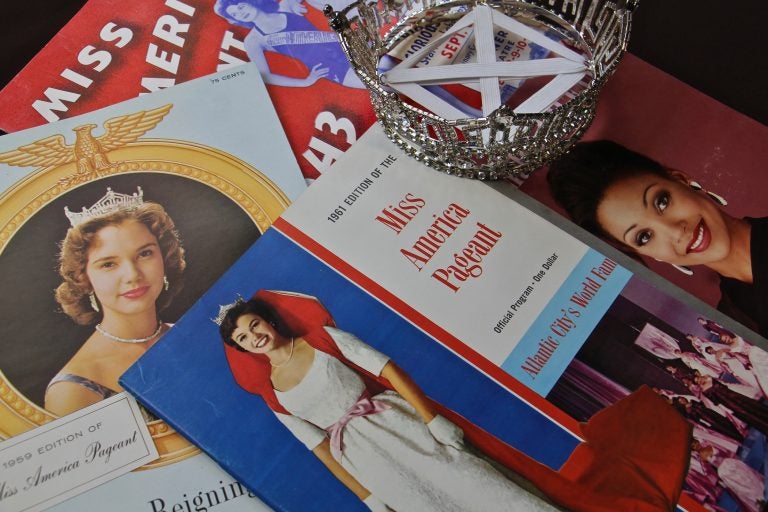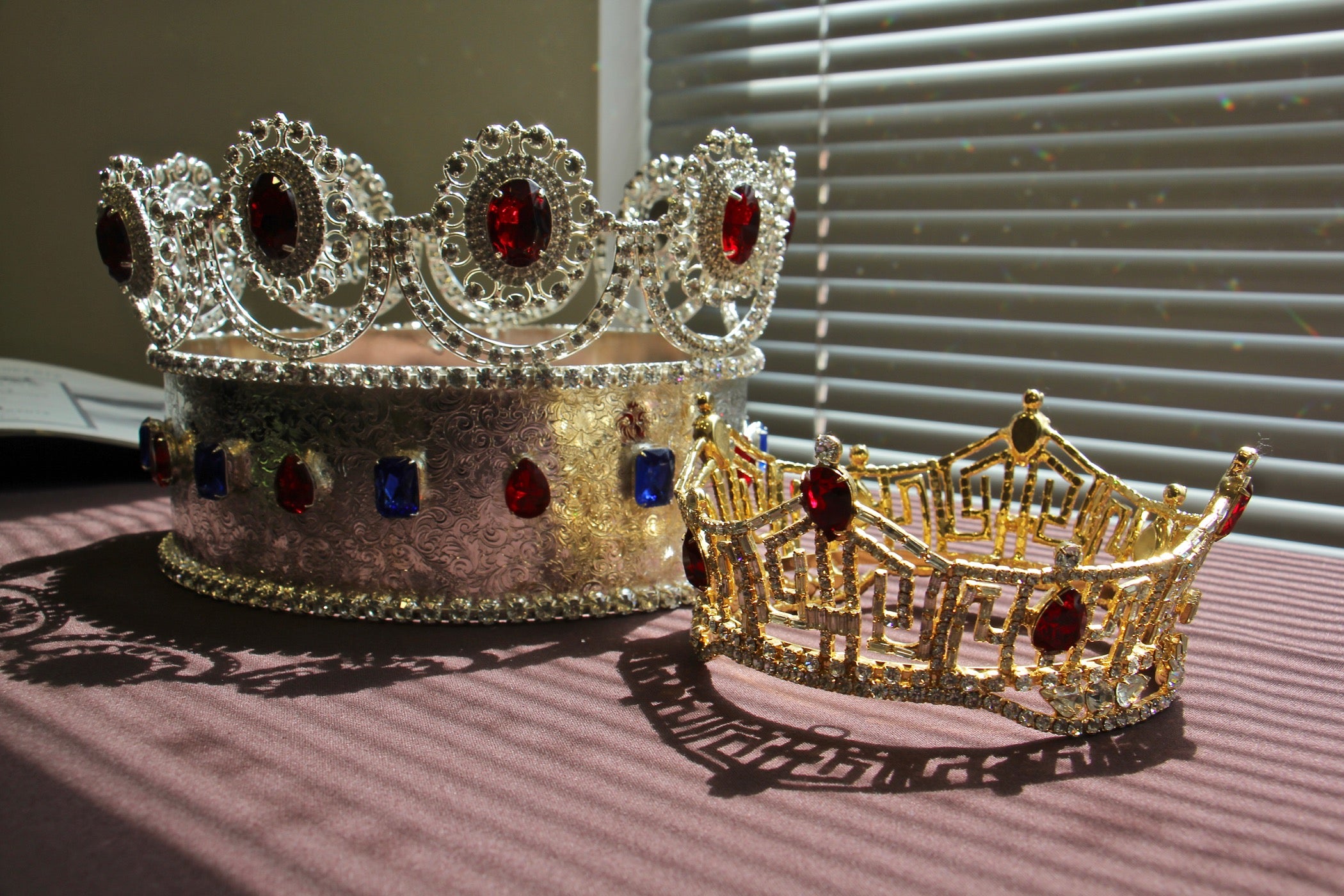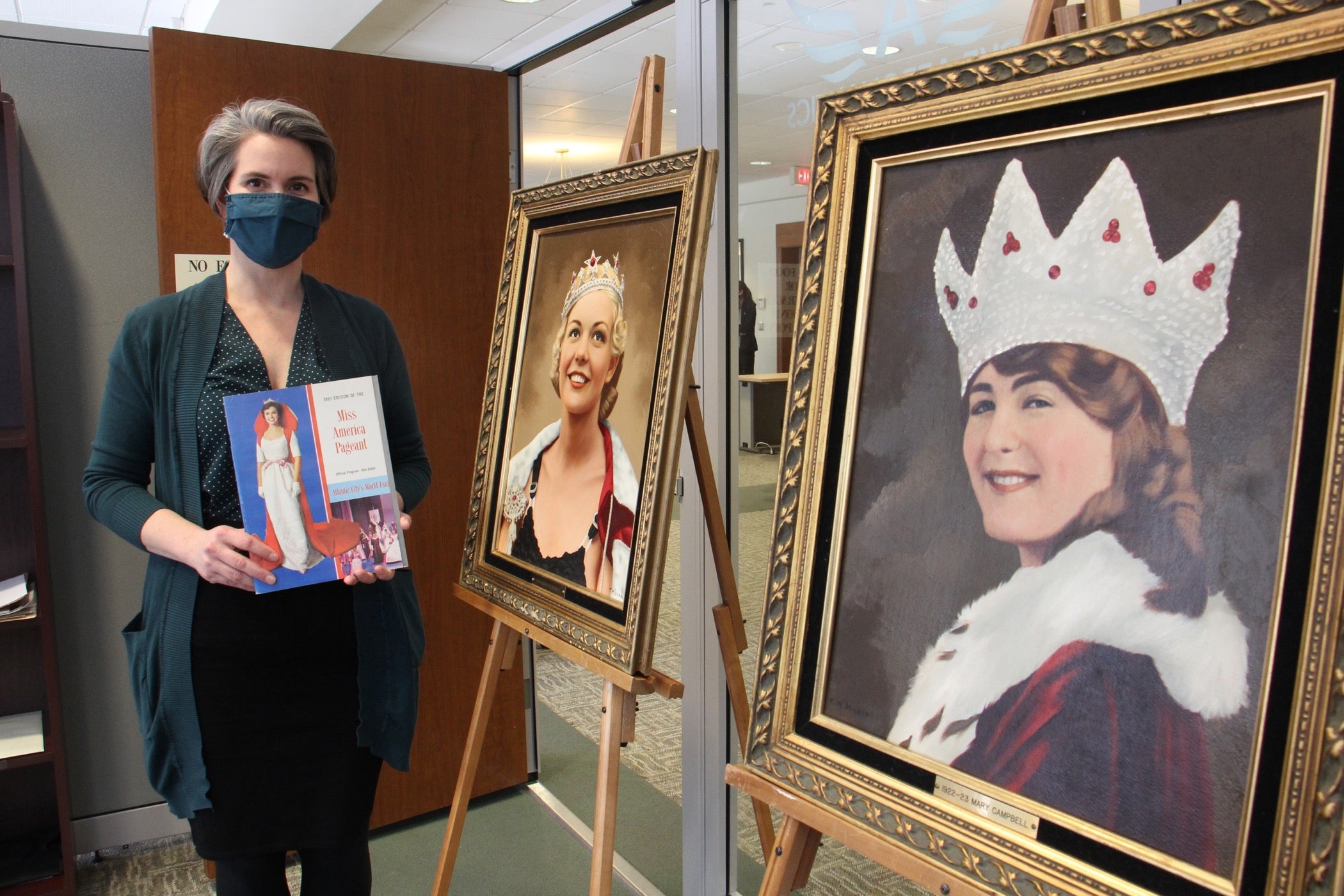There she is, online: Miss America archives digitized at Rowan University
One hundred years of American history will have a digital home at the South Jersey university for scholarly use.
Listen 1:46
The Miss America Organization archive includes everything from program books and photos to films, jeweled crowns, trophies, and oil paintings of winners. (Emma Lee/WHYY)
Students at Rowan University are going through a treasure chest of American history that includes jeweled crowns, velvet capes, and a cookbook. It’s 100 years of artifacts from the Miss America Organization.
Students are scanning pictures and other documents in addition to taking pictures of the crowns, trophies, and a Waterford scepter carried by winners for what will become the cornerstone of the new Rowan Digital Collections.

“This is such a great collection for American cultural … and popular history,” said Katherine Turner, a history professor at Rowan who is the project manager for the job.
The physical artifacts are in storage in Atlantic City. Turner said they take up five rooms and are stacked from the floor to the ceiling.
“We’re not sure what all is in there because there’s so much,” she said. “They seem to have kept almost everything.”
The Miss America Organization will continue to retain the physical artifacts, but the digitized artifacts will be available for scholarly use.

The digitizing is in the early stages with some funding from Rowan and the Miss America Organization, which has just established a crowdfunding campaign to help support the work. Turner hopes this will turn into a multi-year project.
“It really deserves to be a full archive for scholarly use and maybe for a certain amount of public access,” she said.

Some of the artifacts are in the Digital Scholarship Center at the Campbell Library on Rowan’s campus in Glassboro. Among those about to get digitized when WHYY News visited were a couple of oil portraits of past winners. Turner notes that the portraits range in artistic styles; some were done with charcoal.
There were also a couple of jeweled crowns and some programs that not only featured local businesses but also the contestants in the competition: their names, height, bust size, hair, and eye color, along with their complexion. There is also a Miss America cookbook with the foreword written by 1971 Miss America winner Phyllis George, who would go on to become a pioneering sportscaster with CBS.
The Miss America Pageant was conceived in Atlantic City, N.J. as a gimmick. Businessmen founded the competition in 1921 as a bather’s revue to extend the summer tourist season beyond Labor Day. The winner at the first competition, 16-year-old Margaret Gorman of Washington, D.C., claimed the Golden Mermaid trophy and $100. By the 1950s, Miss America became a source for scholarships for contestants.
Destiny Hall and Grace Fox are two of the students helping to digitize the artifacts. Both students found what they have seen so far interesting.
Hall, a senior majoring in English and writing arts, said she didn’t have regular exposure to the Miss America competition, but was grabbed by how the women were presented.

“I don’t think it was ever just a beauty pageant … I think that’s a very big misconception,” she said, adding that she saw that the women who participated “were actually career girls.”
“I found there was more of a focus on what they’re doing after the pageant, how this pageant is helping them through scholarships and introducing them to their field.”
“There’s also a lot of really interesting material of fashion and TV and staging of the pageant,” said Fox, a freshman English major. “I feel like sometimes you can forget when you’re reading on a page about the charities that these women were involved in.”

Get daily updates from WHYY News!
WHYY is your source for fact-based, in-depth journalism and information. As a nonprofit organization, we rely on financial support from readers like you. Please give today.







